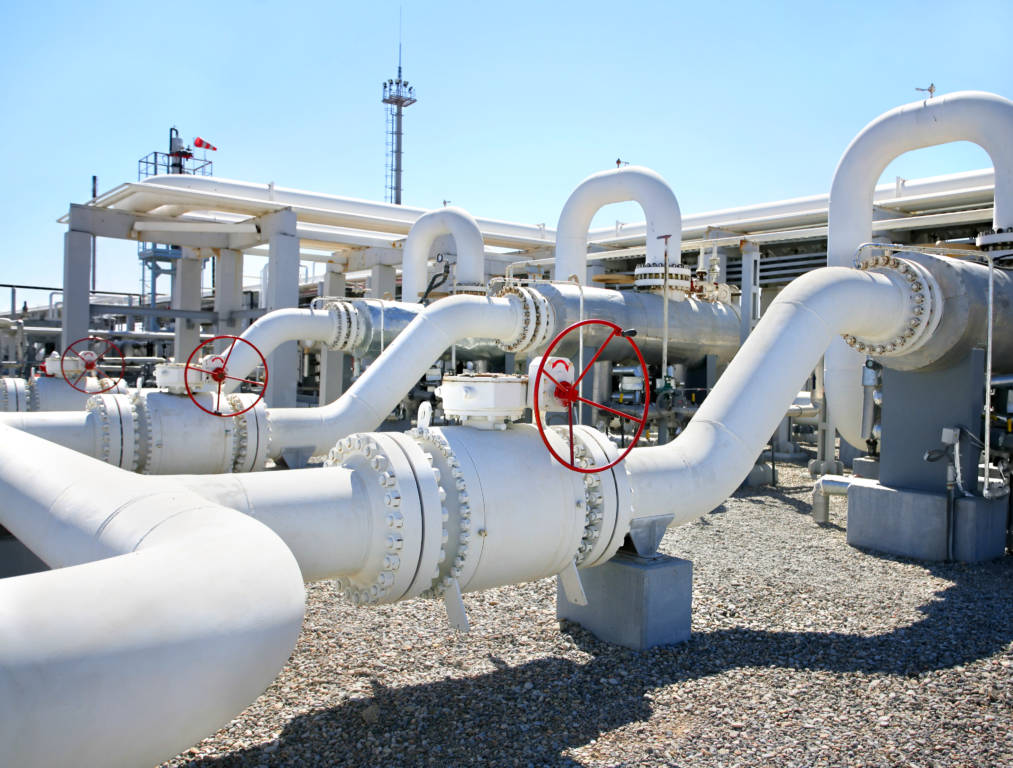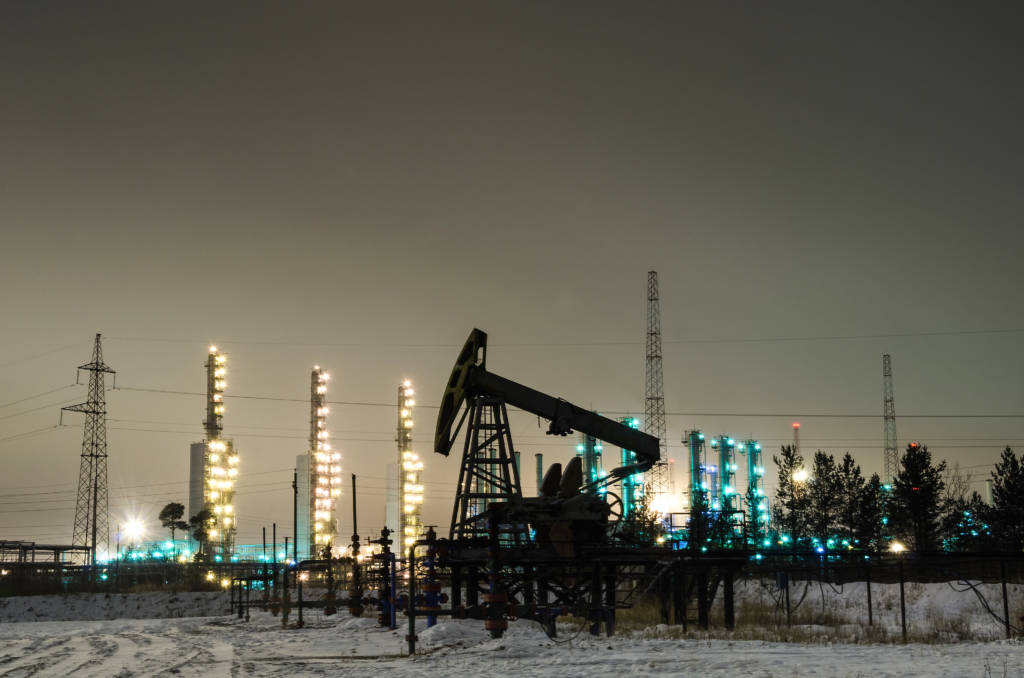Processing, transporting and storing of large amounts of energy in the form of hydrocarbons, can result in the unintentional release of that energy in ways that can harm people and damage the environment. Recent events at compressor stations and LPG storage and process facilities, has taught us that even hydrocarbons in relatively stable and understood situations can be extremely dangerous.

Drilling Operations
In recent years, we have seen an increase in the density of equipment and Connex boxes at drilling sites. By adding more technology and robotic assist to the already dangerous operation, we are seeing an increase in accidents as a result of no longer having enough air flow under and around the drilling platform itself. The added equipment, while very beneficial to the operation, has created relatively enclosed areas where associated gas can accumulate in addition to the mud tank. The practice of placing fixed gas detection on the mud tank as an indicator of excess associated gas being released from the drilling operation is not providing adequate coverage for the added risk the congestion from the new equipment is creating. Likewise, the toxic risk from hydrogen sulfide (H2S) and potentially carbon monoxide has increased in the congested spaces.
Risk management begins with performing process hazards analysis on the area and equipment at the drilling rig to identify the potential causes and consequences associated with the operation. Fire detection coverage mapping is needed to place flammable gas, toxic gas, and fire detectors, especially in high congestion areas where gas could accumulate. Gas dispersion modeling, or in restricted spaces computational fluid dynamics, will be required to determine the location for fixed gas detectors. Increased congestion has created areas where carbon monoxide could also exist. Facility siting will be essential to keep potential consequences of incidents from impacting occupied buildings and surrounding area outside of the fence line.

Oil and Gas Production – Onshore and Offshore
After the drilling is complete, the well gets handed over to production and allows for the exploitation of the resources for years into the future. The process equipment that handles the fluids coming out of the well need to be designed to handle the myriad hazards that can result from mis-operation. Safety instrumented systems are extensively used in these plants to protect against a variety of hazards including potentially extremely high pressures of the geological formation that some portions of the plant must be protected from. In addition to compliance with standards that define the expected safety equipment, process hazards analysis through HAZOP, and also LOPA, provide much richer understanding of the hazard scenarios than strict standards compliance alone. Since the materials processed in these facilities are flammable and very often toxic, use of gas detection equipment is ubiquitous. Proper determination of the number and location of gas detectors and fire detectors is critical to prevent budgets, both CAPEX and OPEX, from getting out of hand with excessive detectors counts that are yielded from simple prescriptive methods. Gas detection and the proper location of occupied facilities also necessitates the use of dispersion modeling and explosion modeling to make decisions about where occupied rooms are located and how they are safeguarded from the effects of potential releases of process materials.
Oil and Gas Pipelines
Pipelines move large amounts of hydrocarbons long distances, and benefit society by taking trucks and railcars off the roads and away from population centers. Many pipeline accidents are due to equipment, like a backhoe, coming in contact with a pipeline and the subsequent ignition of the hydrocarbons. However, a significant number of pipeline related accidents are at pump and compressor stations along the pipeline and processing plants. Safeguarding pipelines is critical to protecting the communities through which the pipelines travel. Leaks from the pipeline, or associated pump and compressor stations, can affect local communities with both safety and environmental damage hazards.
Risk management begins with performing PHA on the process units and equipment that process the gas and auditing the facilities to ensure that they are compliant with local legislation and regulation. SIS are commonly used in numerous locations in the process to protect equipment, large pumps and compressors, and prevent loss of containment. Since the process includes flammable materials and sometimes also toxic materials, fire detection coverage mapping is needed to place flammable gas, toxic gas, and fire detectors, especially around high probability leak sources, such as compressors. Gas dispersion modeling is commonly required to place gas detectors for the flammable and toxic gas and potentially toxic byproducts of carbon dioxide and carbon monoxide which can be especially problematic for indoor installations. Facility siting will be essential to keep potential consequences of process incidents from impacting occupied buildings, and also to ensure the impact of events on the pipeline or associated facilities do not impact neighbors.
Natural-gas Processing and Transportation
Gas producing wells, especially in areas of shale fracking, produce a wide range of hydrocarbons in addition to the methane that is the primary product. These additional materials include ethane, propane, butane, pentanes, and natural gas liquids (NGL). These materials and water must be removed with gas processing before sending the pipeline quality gas down the line. Furthermore, these materials are very valuable, sometimes more so than the natural gas product. Processing can be done at the well head before entering the gathering pipelines for dry gas, but more often gas processing plants are required to perform all of the require separations and then store and distribute the different separate products that are created. The processing that is required can include drying units to remove water and cryogenic fractionation to separate the individual components. Also, sulfur treatment may be required depending on the origin of the gas. Gas processing can be complex, and the risks involve all the aspects of process safety management. As with most other oil and gas operations, process hazards analysis through HAZOP and LOPA is a necessary starting point to understanding what safeguarding is required. This generally leads to the implementation of safety instrumented systems to protect equipment against various loss of containment scenarios. Since leaks of most of the process equipment could result in flammable or toxic gas clouds, gas detection and fire detection is essential, and fire and gas mapping is a good way to ensure that you the correct number of detectors in the correct location. Facility siting using dispersion and explosion modeling is also necessary to ensure that equipment layout and occupied building layout are appropriate for the degree of hazard contained in the plant.

Refining and Upgrading
Before crude oil can be consumed in a multitude of industrial and consumer products it must be refined into the building blocks of fuels and chemicals. This work is done at oil refineries. In some cases, such as oil sands, crude oil also needs to be upgraded before it can be exploited in a traditional refinery. In the refinery the crude oil is fractionated into multiple different grades of products, such as naphtha, diesel, and kerosene. Additional refinery units also use chemical reactions to create more valuable products from base materials by removing impurities and cracking heavier molecules into more valuable fuel components. Also, many refineries, through separations and reactions, convert crude oil into feedstocks for petrochemical plants that produce plastics and other consumer products. Refineries include a large number of different process units that contain significant hazards. All throughout the refinery, loss of containment can result in flammable hazards, and potentially toxic hazards that result from the large amounts of hydrogen sulfide that are liberated during the removal of sulfur from the fuels. In addition, many units have special hazards, such as the use of toxic hydrogen fluoride in some alkylation units. Knowledge of what all of the process units do and what specific hazards that are posed by those process units is essential to properly analyzing and safeguarding them.
Addressing the risks posed by refining and upgrading operations begins with process hazards analysis. HAZOP and LOPA are ubiquitous in refineries and are a necessary first step in determining what safeguards are required for safe operation. LOPA, along with compliance with refining standards such as those from the American Petroleum Institute, results in the application of significant numbers of safety instrumented systems. These systems protect against specific process hazards and also the general hazards associated with processing equipment such as compressors and fired heaters. Since loss of containment in most equipment items in a refinery could result in flammability hazards, and potential toxic hazards, determination of where gas detection and fire detection is required through fire and gas mapping is an essential part of a process safety program. Since there are a large number of occupied building scattered around a typical refinery, and many refineries are surrounded by the local community in close proximity, dispersion and explosion modeling to determine appropriate facility siting will also be essential.